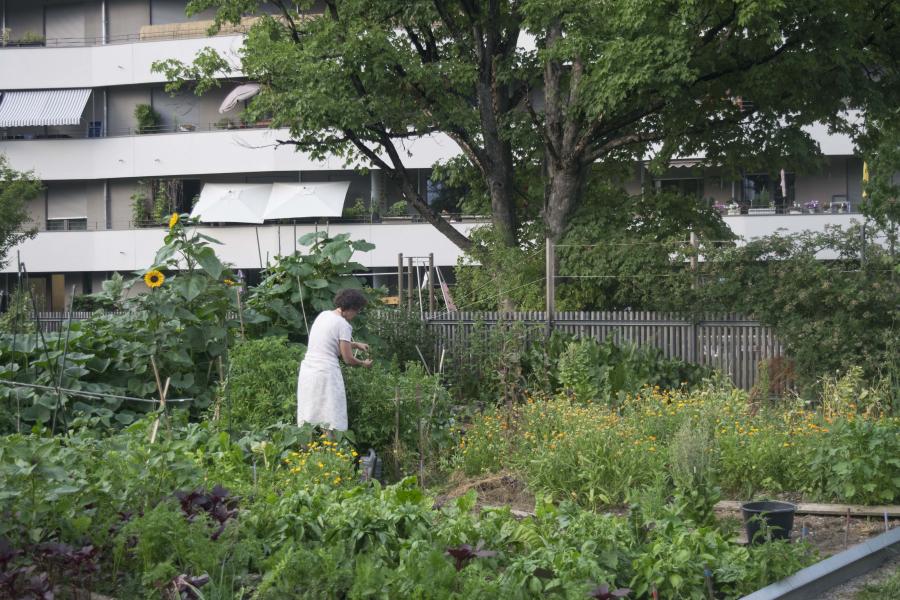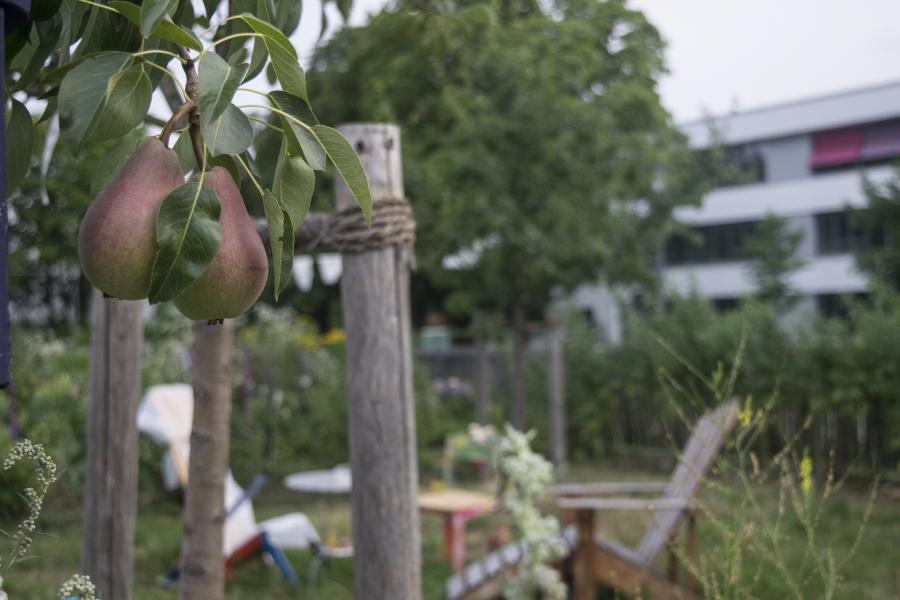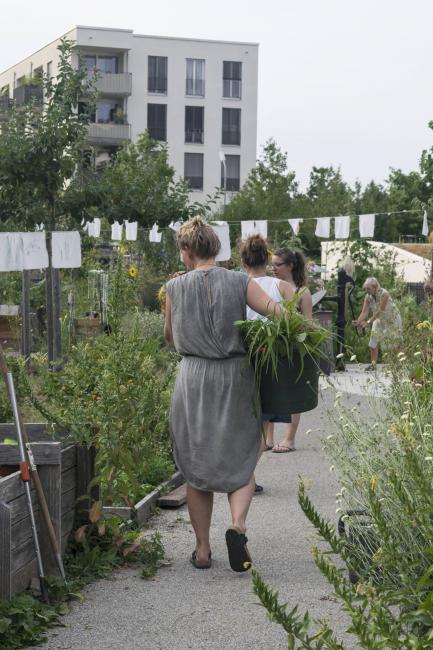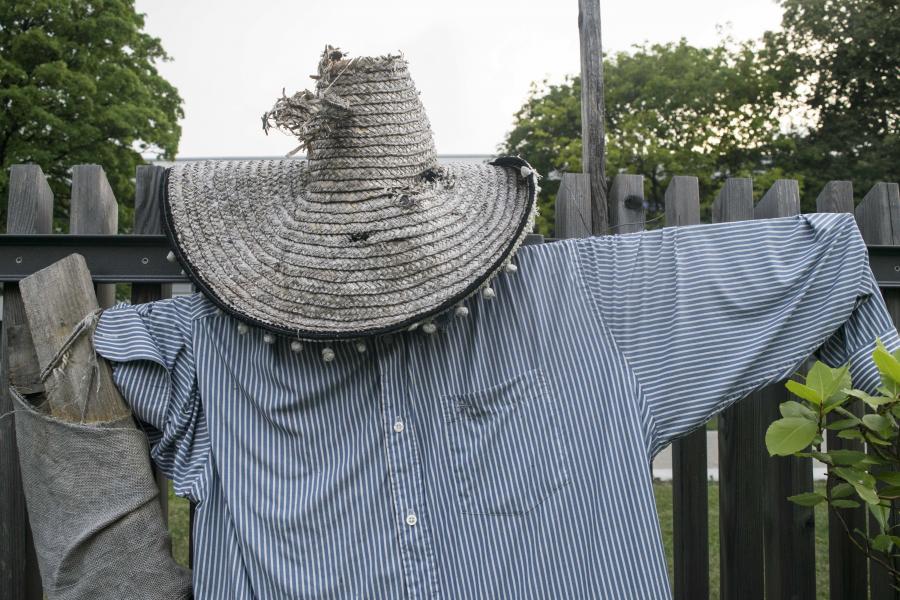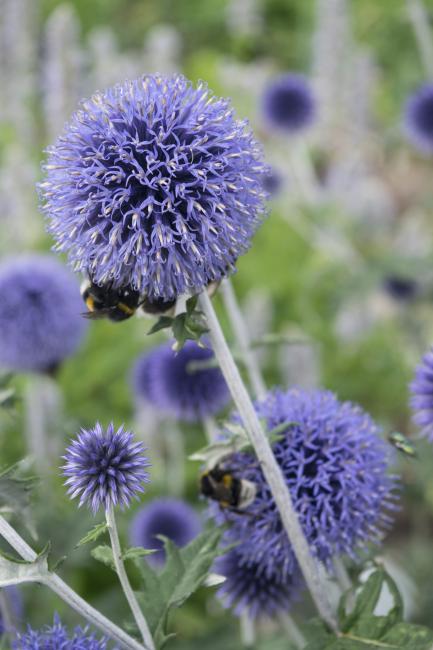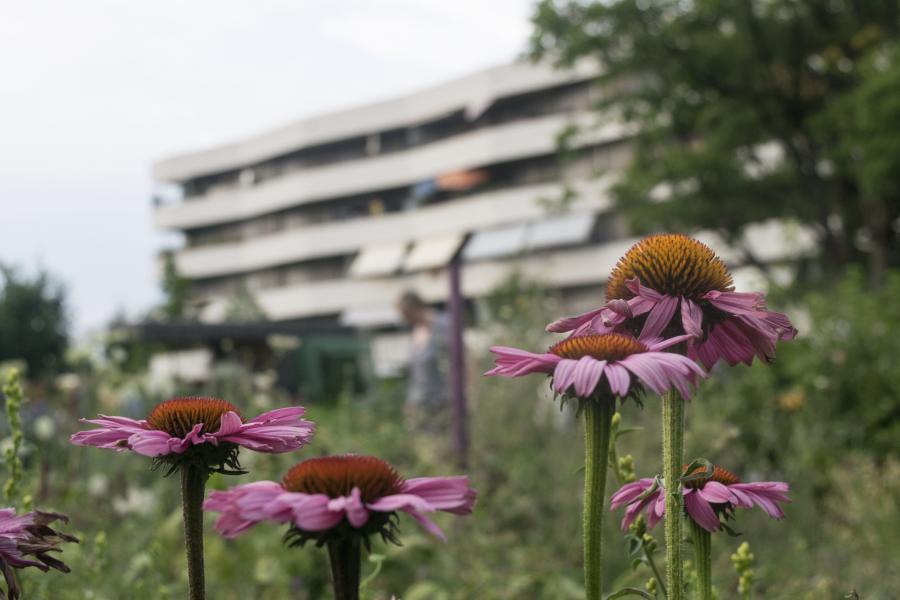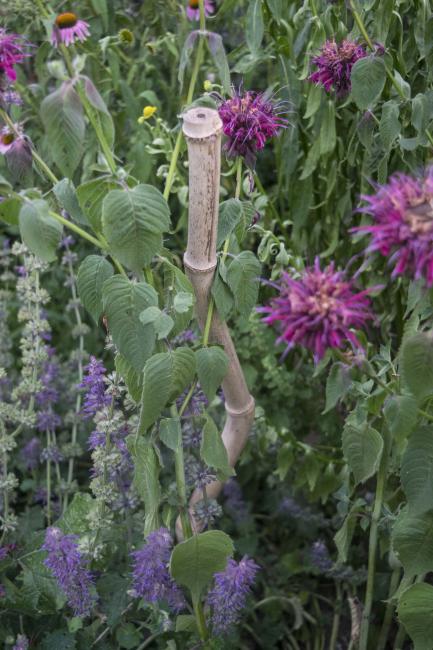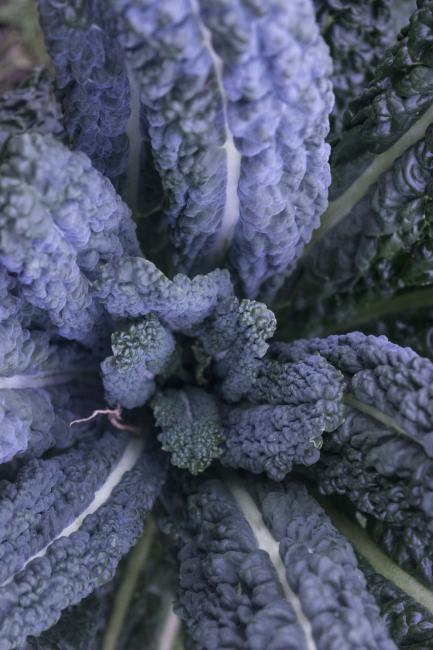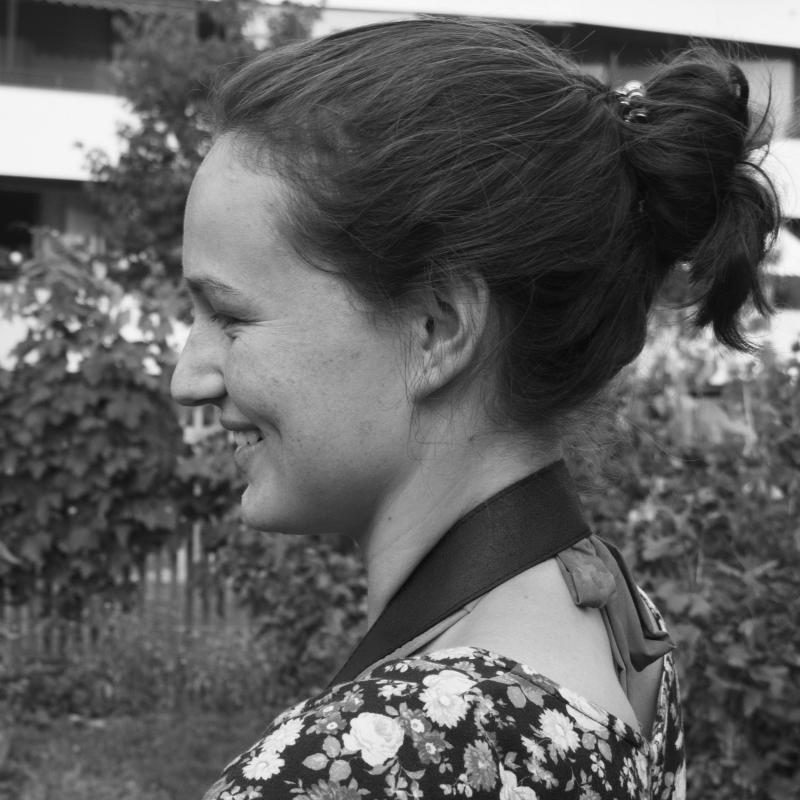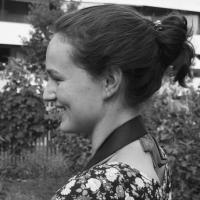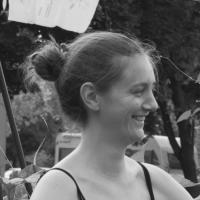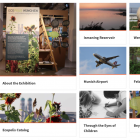StadtAcker
Munich’s most valuable oasis?
Many people dream of having a garden in the middle of the city. But as urban spaces become ever more tightly packed, the dream seems to become more and more unachievable. Although Munich seemingly has a lot of green spaces, more of its soil is covered by concrete than in any other major German city.
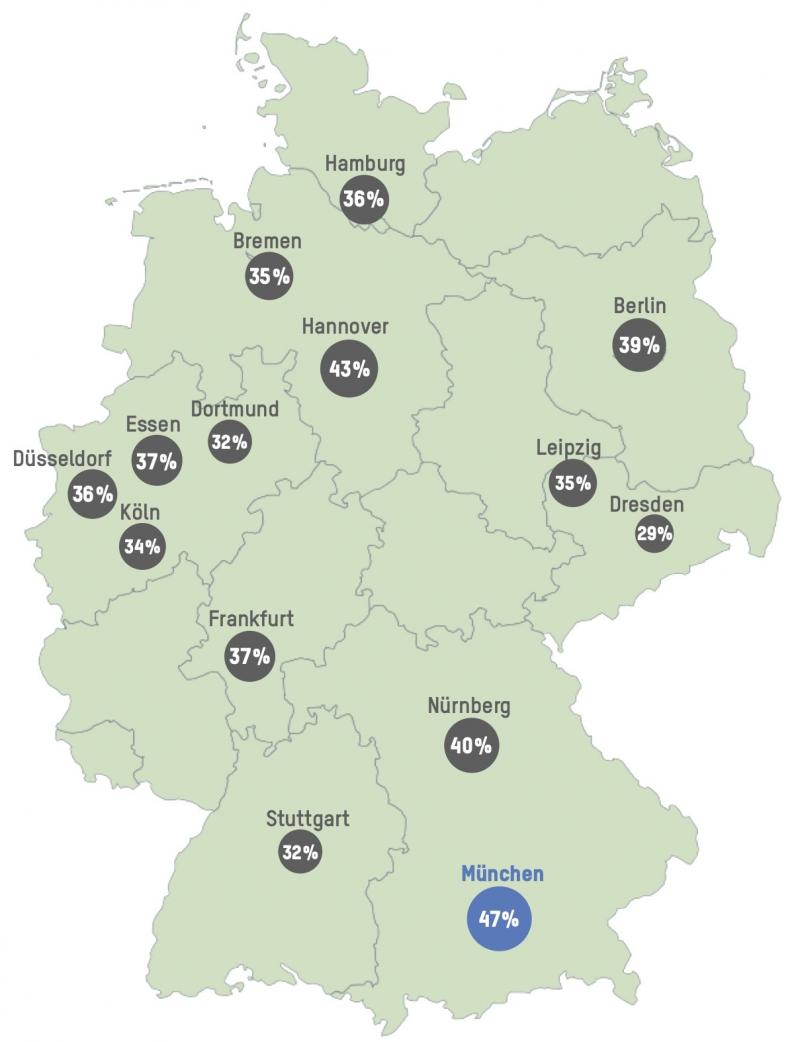
Share of sealed areas in major German cities.
Share of sealed areas in major German cities.
Graphic design by Johanna Mayer.
 This work is licensed under a Creative Commons Attribution 4.0 International License.
This work is licensed under a Creative Commons Attribution 4.0 International License.
Free pieces of land are rare, and the waiting lists for allotments are long. But necessity gives birth to creative solutions: built-up spaces and rooftops are turned into flower beds, guerrilla gardeners sow wild plants without authorization, and community gardens fight for their right to exist.
An example of how the dream of an urban garden can become a reality is the StadtAcker. Assisted by the city administration, citizens created a green oasis.
What benefits does such a place bring for people? Should the costly and scarce Munich land be used for gardens?
From military troops to gardening groups
The StadtAcker is located in the neighborhood Ackermannbogen on the grounds of a former barracks. The military facility was built in the 1930s by the Nazi regime and later used by the US Army and the Bundeswehr.
When the city decided in 1998 to convert the grounds to a residential space, citizens were not content to merely preserve the many green spaces and the old stands of trees: the neighborhood was to have a garden—open to all! And thus the StadtAcker was born. Unlike other urban gardens, this community garden was the product of a cooperation with the city. The StadtAcker was able to secure funding and a permanent location—privileges that many other gardens often do not have.
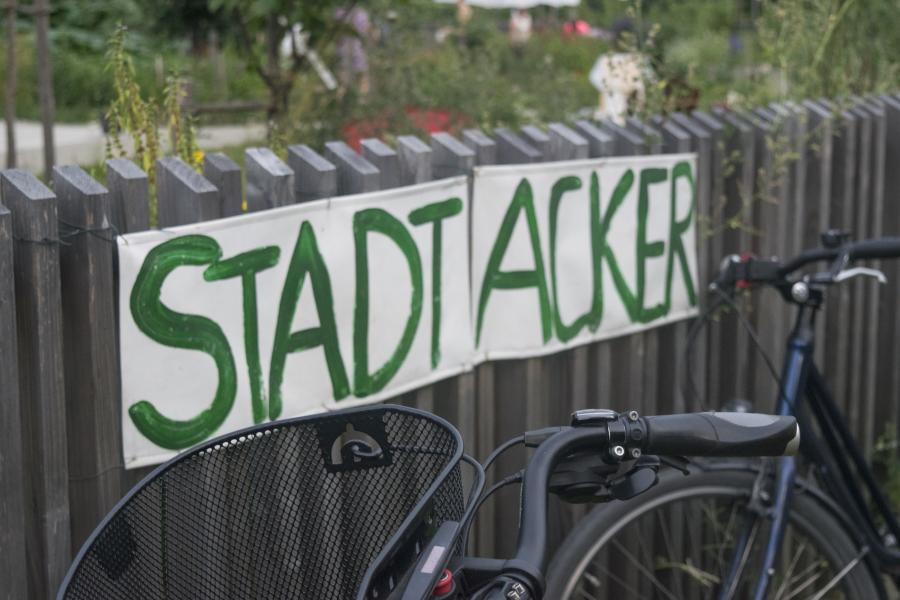
Impressions from a day at the StadtAcker
The StadtAcker in the Ackermannbogen neighborhood.
Photograph by Laura Kuen. CC BY 4.0 international license.



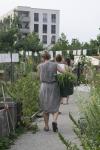

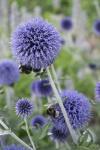

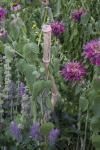

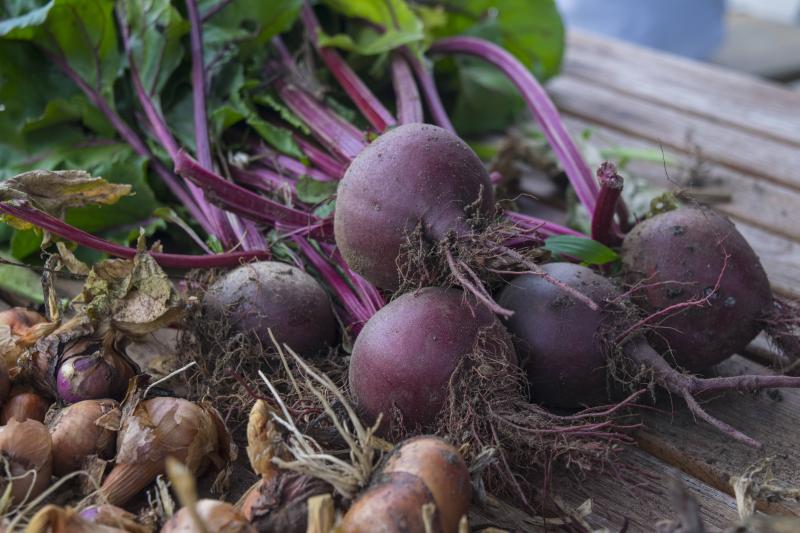
Freshly picked vegetables from the StadtAcker.
Freshly picked vegetables from the StadtAcker.
Photograph by Laura Kuen.
 This work is licensed under a Creative Commons Attribution 4.0 International License.
This work is licensed under a Creative Commons Attribution 4.0 International License.
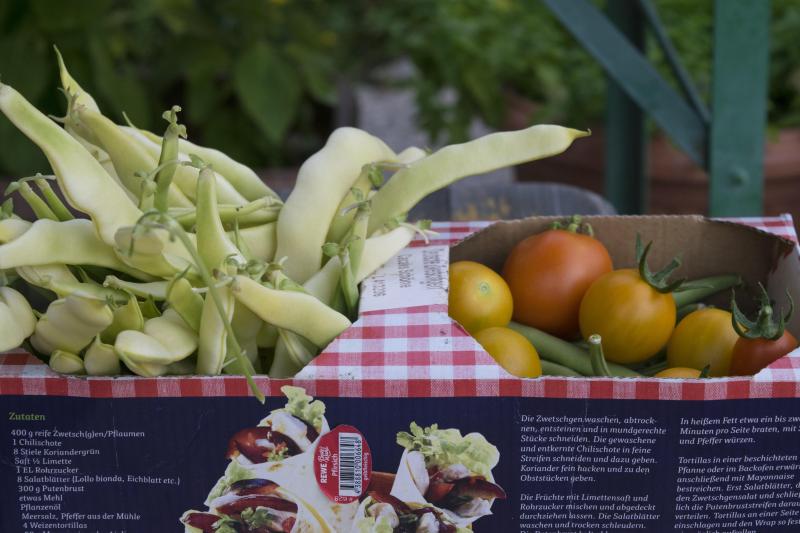
Harvest of fresh vegetables at the StadtAcker garden.
Harvest of fresh vegetables at the StadtAcker garden.
Photograph by Laura Kuen.
 This work is licensed under a Creative Commons Attribution 4.0 International License.
This work is licensed under a Creative Commons Attribution 4.0 International License.
Today some 30 active and many more occasional gardeners plant, water, and enjoy their StadtAcker. Their age, heritage, or place of residence doesn’t matter: all are welcome!
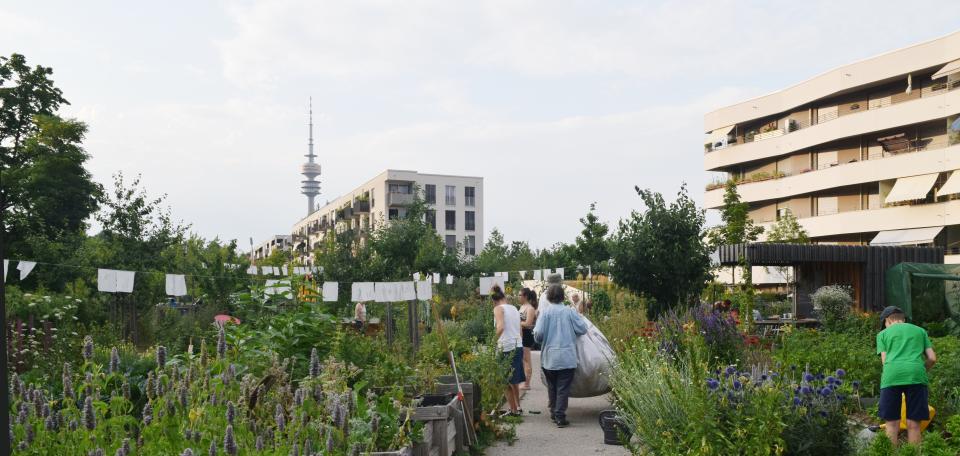
The StadtAcker in the Ackermannbogen neighborhood, the Munich Olympic Tower can be seen in the background.
The StadtAcker in the Ackermannbogen neighborhood, the Munich Olympic Tower can be seen in the background.
Photograph by Laura Kuen.
 This work is licensed under a Creative Commons Attribution 4.0 International License.
This work is licensed under a Creative Commons Attribution 4.0 International License.
Communication and organization are crucial for the success of a community garden. One learns to work together as a team and one profits of other people’s knowledge.
The StadtAcker aims at creating awareness for the environment and ecological connections. There are fields of wild flowers and a colony of bees. One can experiment with old, robust seeds and different ways to compost.
School classes and nearby kindergartens have their own patches. Talks, workshops, and communal cooking evenings, one can experience nature close by.
The StadtAcker makes possible what is often not self-evident in a large city: it enables people to experience community and the connection to nature.
Every square meter in Munich is expensive
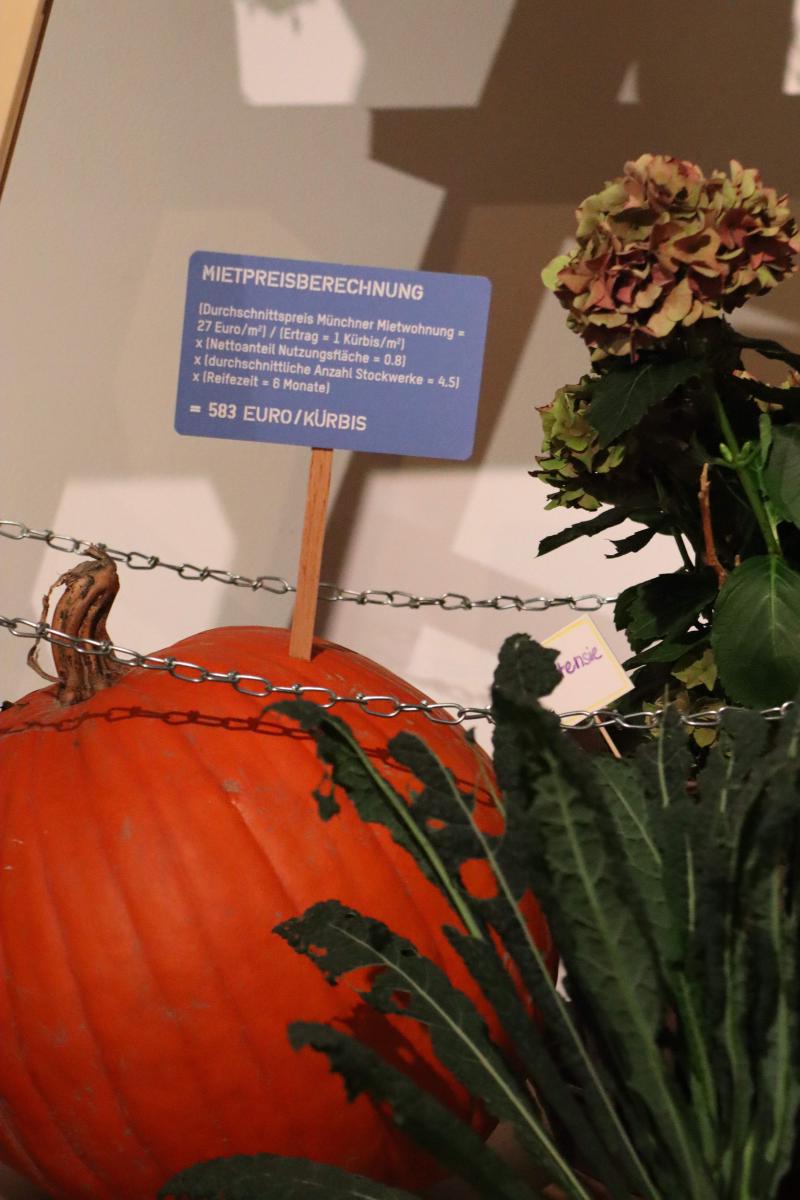
Charged rent for the space necessary to grow a pumpkin:
(The average price of a rental apartment in Munich = 27 Euro/sq m) / (yield = 1 pumpkin/sq m)
x (net fraction of usable area = 0.8)
x (average number of floors = 4.5)
x (ripening season = 6 months)
= 583 Euro/pumpkin
Charged rent for the space necessary to grow a pumpkin:
(The average price of a rental apartment in Munich = 27 Euro/sq m) / (yield = 1 pumpkin/sq m)
x (net fraction of usable area = 0.8)
x (average number of floors = 4.5)
x (ripening season = 6 months)
= 583 Euro/pumpkin
Photograph by Laura Kuen.
 This work is licensed under a Creative Commons Attribution 4.0 International License.
This work is licensed under a Creative Commons Attribution 4.0 International License.
The StadtAcker, taking up 1000 m2, and other generous green areas in the neighborhood Ackermannbogen are an exception in the densely populated Munich. From a financial perspective, a garden is not cost-efficient. If a pumpkin plant had to pay rent on the StadtAcker, the costs for a single pumpkin would total more than 500 Euro by the time it is harvested. For Munich’s future, the question of priorities arises. What is more important—green areas for higher livability or new apartments? How do we want to use valuable green areas in the city? As a park, a football field, or maybe a commonly used and designed garden?
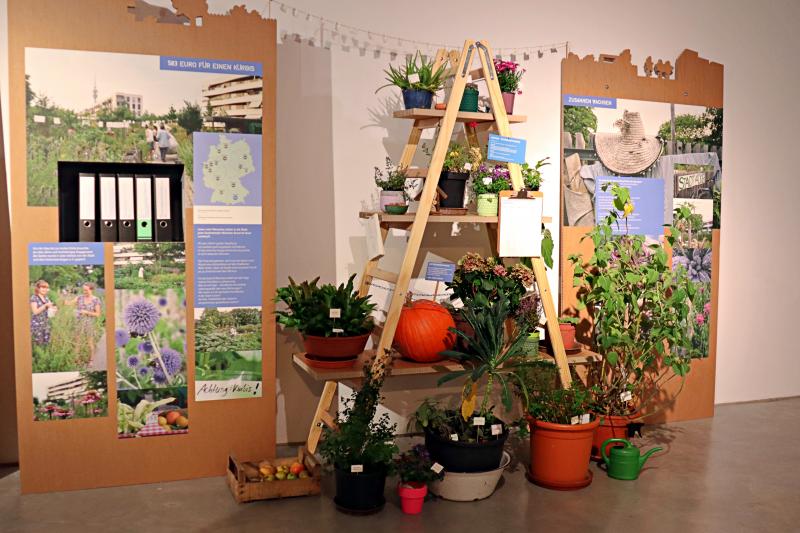
The StadtAcker station during the physical Ecopolis München 2019 exhibition.
The StadtAcker station during the physical Ecopolis München 2019 exhibition.
Photograph by Laura Kuen.
 This work is licensed under a Creative Commons Attribution 4.0 International License.
This work is licensed under a Creative Commons Attribution 4.0 International License.
About the curators
Johanna Mayer
Johanna Mayer completed a master’s degree in theoretical and mathematical physics at LMU Munich. She is also a graduate from the Rachel Carson Center’s Environmental Certificate Program. After her master’s program, she has worked on a scientific publication at the chair for statistical and biological physics at LMU Munich. She recently started a new position as an intern for data science and research at the Green-Tech startup Planetly.
It’s particularly beautiful that an urban garden can bring people together. I could really feel the joy of community gardening in the StadtAcker. It was great to get to know so many dedicated Munich gardeners.
—Johanna Mayer
Carolin Pichl
Carolin Pichl is currently completing the Rachel Carson Center´s Environmental Studies Certificate Program. She has already finished her master’s degree in management at TUM and holds a bachelor‘s degree in sports science from TUM. Her master thesis focused on the consequences of being perceived as a socially committed person in the application process.
It was only on the StadtAcker that I realized how much work and organization is involved in running a community garden. This garden can serve as a role model for further garden projects in the city of Munich.
—Carolin Pichl
How to cite: Mayer, Johanna, and Carolin Pichl. “StadtAcker.” In “Ecopolis München 2019,” edited by Katrin Kleemann. Environment & Society Portal, Virtual Exhibitions 2020, no. 2. Rachel Carson Center for Environment and Society. http://www.environmentandsociety.org/node/9024.



